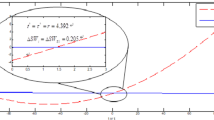Abstract
This paper focuses on the articulation of policies in the interface between economic production and water quality. One problem is the introduction, at this production-ecologic interface, of unwanted water-borne residuals by firms and municipalities. The policy objective is to absorb the social cost of environmental degradation into the production function within the two constraints of efficiency in the allocation of resources and the protection of property rights. The efficient allocation of environmental resources (in such a way as to maximize human welfare) has long been recognized as a basic objective in resource management. Equally important is the consideration of environmental rights and responsibilities in a society where property power and the institution of property is a dominant characteristic. Since the manner in which the property owner acts may affect the environment of his neighbours, it is important that policy instruments inform the holder of the property rights of the ill-effects of his actions upon others and induce him to take action to remedy the situation.
The question of water quality management options requires urgent consideration for two reasons. Firstly, the cost of water pollution control is already considerable and is likely to increase even more sharply as the growing number of urban centres put greater pressure on the water resource for waste dilution and assimilation and other competing uses such as municipal demands, heat dissipation, recreation and wildlife protection. Secondly, the institutional mechanisms for dealing with this problem seem to be inadequate and ineffective. It is true that subsidies and grants have encouraged the building of more municipal waste treatment plants while regulation and court action have reduced some of the worst abuses.
Subsidies and grants may be inefficient policy choices because they encourage hardware solutions even when other less expensive solutions are possible. In addition, they fail to inform the polluters of the ill-effects of their action; and the general public has to shoulder the burden in the form of increased taxation. Regulation and court action are cumbersome, sporadic and time-consuming.
Effluent standards could be made flexible as a policy instrument if they afforded the polluter the opportunity to choose either to install in-plant controls or to pay the “fine” or to combine both these choices in any way that minimized his costs. This would combine the policy instrument of the effluent standard with the policy instrument of an effluent (or user) charge. The charges could be set either to reflect marginal pollution damages or the marginal cost of maintaining a given ambient standard. In other words the inferred marginal damage of pollution is equal to the marginal cost of treatment up to some desired level thus ensuring that the desired amount of waste load be reduced at least cost. Pricing and transferable effluent permits serve the same purpose.
Similar content being viewed by others
References
Baumol, W. J. and Oates, W. A.: The Theory of Environmental Policy: Externalities, Public Outlays and the Quality of Life. Englewood Cliffs, N. J., Prentice-Hall 1974.
Baumol, W. J. and Oates, W. E.: Economics, environmental policy and the quality of life. Englewood Cliffs, N. J., Prentice-Hall 1979.
Bauer, B. O.: Role of Economic-Legal-Institutional Mechanisms in Environmental Policy: An Annotated Bibliography and Review. Toronto, Ministry of the Environment Experience '80 Report 1980.
Dansereau, P.: The Dimensions of Environmental Quality. In: H. Bowen-Jones (ed.) Human Ecology in the Commonwealth, London, Charles Knight, p. 1–24, 1972.
Dewees, D. N., Everson, C. K. and Sims, W. A.: Economic Analysis of Environmental Policy. Toronto, University of Toronto Press 1974.
Dorfman, N. S. and Snow, A.: Who will pay for pollution control? National Tax Journal, 28 (March) 101–15 (1975)
Environmental Law Institute: Effluent Charges on Air and Water Pollution. Washington, D. C. 1973.
Gianessi, L. P. and Peskin, H. M.: The distribution of the costs of Federal Water Pollution Control Policy. Land Economics, 56, 1 (Feb.) 85–102 (1980)
Grima, A. P.: Residential Water Demand: Alternative Choices for Management. Toronto, University of Toronto Press 1972.
Grima, A. P.: Institutional Mechanisms for Great Lakes Rehabilitation: An Overview. A paper presented at the International Association for Great Lakes Research, Annual Meeting, Kingston, Ontario, May 1980.
Hirshleifer, J., De Haven, J. C. and Milliman, J. W.: Water Supply: Economics, Technology and Policy. Chicago, University of Chicago Press 1969.
OECD (Organization for Economic Cooperation and Development), Environment Directorate: Pollution Charges: An Assessment. Paris, OECD 1976.
Regier, H. A., Whillans, T. A., Grima, A. P.: Rehabilitation of the Long Point Ecosystem: Initiating a Process. Contact, Journal of Urban and Environmental Affairs, 2, 3, 125–149 (1980)
Stephenson, J. B. (ed.): The Practical Application of Economic Incentives to the Control of Pollution — The Case of British Columbia. Vancouver, University of British Columbia Press 1977.
Author information
Authors and Affiliations
Rights and permissions
About this article
Cite this article
Grima, A.P. Institutional instruments for water pollution control. GeoJournal 5, 503–511 (1981). https://doi.org/10.1007/BF02484721
Issue Date:
DOI: https://doi.org/10.1007/BF02484721




